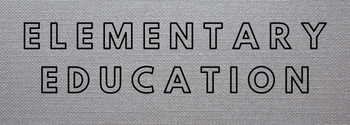Brizard: 4 Ways To Think About The Systems That Are Keeping New York City’s Specialized High Schools Segregated
Brizard: 4 Ways to Think About the Systems That Are Keeping New York City’s Specialized High Schools Segregated
When I came across the news that only seven Black students were accepted out of 895 seats at Stuyvesant High School, which is considered New York City’s most prestigious public high school, it brought back a flood of memories. I had spent over 20 years working in NYC’s public schools and even led the high school division.
Shortly after I left the city to take on a role in Rochester’s public school system, a lawsuit was filed challenging the Specialized High School Institute (SHSI) in NYC. Given my previous position, this attack felt personal.
The issue of racial integration in NYC’s specialized public high schools has been a challenge for decades, and those who came before me had the foresight to develop a program aimed at making progress. The SHSI targeted city schools where students from low-income households, predominantly Black and Latinx, were overrepresented. Accepted students underwent an 18-month academic program to prepare for a single exam called the Specialized High School Admissions Test.
In addition to increasing the representation of underrepresented students in these schools, the district also expanded the number of specialized high schools from four to eight (now nine). Despite these concerted efforts, many saw the program as failing to meet its goals, particularly at schools like Stuyvesant High School. Even more disheartening were reports that Black and Latinx students who were accepted into these top schools sought transfers within months of enrollment.
Families who understand how to navigate the education system play the long game. They know which primary schools set students up for acceptance into the best high schools. They are aware that those high schools feed into prestigious colleges and universities, and they understand that the reputation gained from attending elite institutions will put their children on a path to upward mobility or at least maintain their economic status.
This may not be fair, just, or right, but it is an unfortunate reality.
Advocates for the underprivileged strive to create more equitable systems or push existing systems to expand opportunities. After more than three decades in education, and as a parent with one child in nursery school and another heading to college this fall, my perspective on these matters continues to evolve both personally and professionally. My daughter’s high school provided minimal guidance for her transition to college, but luckily my wife (also an educator) and I know how to bridge that gap. We count ourselves as fortunate. My mission is to change the system so that outcomes are not left up to chance.
As my understanding deepens, it informs the work I do at the Bill & Melinda Gates Foundation. Instead of assigning blame, we look ahead to the future and share the lessons we’ve learned along the way.
Here are four key principles that shape my thinking:
1. Systems change cannot be one-dimensional. As a colleague eloquently put it, we need to embrace a comprehensive view that considers the interconnectedness of various factors that shape our current education system. Dr. Donella Meadows, a renowned scholar, emphasizes the impact of leverage points in bringing about significant shifts. For example, we must consider how teacher retention, access to curricula aligned with standards, assessment practices, data accessibility and literacy, school leadership, school culture, physical school environment, housing stability, nutrition, and other leverage points all contribute to positive student outcomes when they work together.
2. Students and families must be involved in systems change. The key is to engage them in ways that empower student agency and enable them to navigate the system effectively. This approach aims to create what is known as the "demand parent." When I hear about students accepted to Stuyvesant seeking transfers, I question whether they feel a sense of belonging in that environment. For students of color, transitioning from a predominantly homogenous environment where they have ample social capital to another predominantly homogenous environment where they are the extreme minority is not easy. Through the SHSI, we discovered that focusing solely on preparing for math and reading tests would not solve the problem. Similarly, solely addressing school culture or climate would also fall short. We now have a greater understanding of cognitive science and social-emotional learning (SEL), allowing us to better grasp the connection between academic standards and social-emotional development.
3. Systems change requires a long-term view. Transforming the education system is a complex and ongoing process that demands consistency and dedication. It is not a quick fix but a journey that requires commitment from all stakeholders, including policymakers, educators, students, and families. By focusing on long-term goals, we can create sustainable change that truly benefits all students.
4. Collaboration and shared learning are essential. No single entity or organization can bring about meaningful systems change on its own. Collaborative efforts and the sharing of insights and best practices are crucial for progress. By working together, we can collectively address the challenges and barriers that hinder equitable access to quality education.
By embracing these principles, we can pave the way for a more inclusive and equitable education system that empowers all students to succeed.
Challenging and multifaceted problems necessitate comprehensive solutions. Elite high schools and specialized programs exhibit an overrepresentation of White and affluent students. Simply implementing a singular program, such as altering or scrapping one test in favor of another, or focusing on one aspect rather than taking a holistic approach, will only result in frustration and lack of success. It is imperative that we adopt a broader perspective and tackle the issue using various methods in multiple settings.
It is high time we adopt a student-centered approach and fully recognize that we are catering to students with intricate and diverse needs within an educational system that perpetuates social stratification. The problem lies within our system, and we must acknowledge, question, and disrupt the systems that foster disparities within our communities. Bridging the gap in opportunities and achievements is a shared responsibility that we can all unite behind.
Jean-Claude Brizard serves as a senior adviser at the Bill & Melinda Gates Foundation.
Note: The Bill & Melinda Gates Foundation financially supports .



